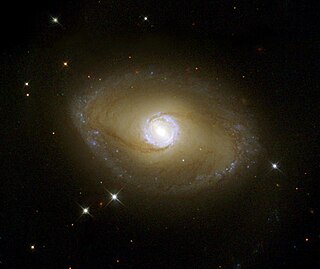
NGC 6782 is a barred spiral galaxy located in the southern constellation of Pavo, at a distance of approximately 173 megalight-years from the Milky Way. It was discovered on July 12, 1834 by English astronomer John Herschel. John L. E. Dreyer described it as, "considerably faint, considerably small, round, a little brighter middle, 9th magnitude star to south". The morphological classification of NGC 6782 is (R1R′2)SB(r)a, indicating a barred spiral galaxy with a multiple ring system and tightly-wound spiral arms. It is seen nearly face-on, being inclined by an angle of 27.2°±0.2° to the line of sight from the Earth.

NGC 5364 is a grand design spiral galaxy located 54.5 million light years away in the constellation Virgo. It is inclined to the line of sight from the Earth at an angle of 47° along a position angle of 25°. It is a member of the NGC 5364 Group of galaxies, itself one of the Virgo III Groups strung out to the east of the Virgo Supercluster of galaxies.

NGC 3344 is a relatively isolated barred spiral galaxy located 22.5 million light years away in the constellation Leo Minor. This galaxy belongs to the group known as the Leo spur, which is a branch of the Virgo Supercluster. NGC 3344 has the morphological classification (R)SAB(r)bc, which indicates it is a weakly barred spiral galaxy that exhibits rings and moderate to loosely wound spiral arms. There is both an inner and outer ring, with the prominent arms radiating outward from the inner ring and the slightly elliptical bar being situated inside. At the center of the bar is an HII nucleus with an angular diameter of about 3″. NGC 3344 hosted supernova SN 2012fh, which was shown to likely be a Type Ib or Type Ic.
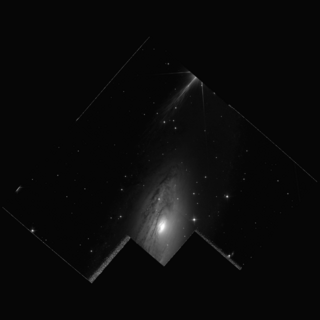
NGC 7013 is a relatively nearby spiral or lenticular galaxy estimated to be around 37 to 41.4 million light-years away from Earth in the constellation of Cygnus. NGC 7013 was discovered by English astronomer William Herschel on July 17, 1784 and was also observed by his son, astronomer John Herschel on September 15, 1828.
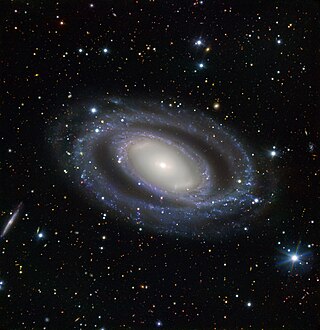
NGC 7098 is a doubled barred spiral galaxy located about 95 million light-years away from Earth in the constellation of Octans. NGC 7098 has an estimated diameter of 152,400 light-years. NGC 7098 was discovered by astronomer John Herschel on September 22, 1835.
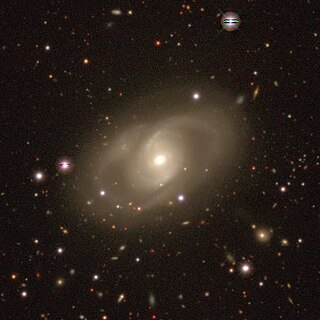
NGC 7060 is an intermediate spiral galaxy located about 200 million light-years away in the constellation of Microscopium. The spiral arms of NGC 7060 appear to overlap. NGC 7060 was discovered by astronomer John Herschel on September 2, 1836.

NGC 4274 is a barred spiral galaxy located in the constellation Coma Berenices. It is located at a distance of circa 45 million light years from Earth, which, given its apparent dimensions, means that NGC 4274 is about 95,000 light years across. It was discovered by William Herschel in 1785.

NGC 7079 is a barred lenticular galaxy located about 110.58 million light-years away in the constellation of Grus. NGC 7079 is also classified as a LINER galaxy. It is tilted about 51° to the Earth's line of sight. NGC 7079 was discovered by astronomer John Herschel on September 6, 1834.

ESO 198-13 is a ring galaxy with multiple ring-like structures located about 240 million light-years away in the constellation Eridanus.
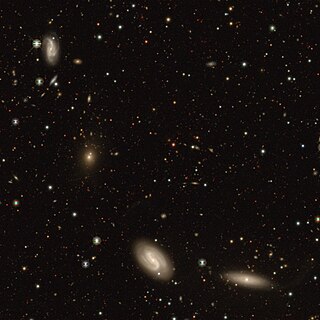
NGC 7087 is a barred spiral galaxy located about 215 million light-years away in the constellation of Grus. NGC 7087 was discovered by astronomer John Herschel on September 4, 1834.

NGC 4473 is an elliptical galaxy located about 50 million light-years away in the constellation of Coma Berenices. It was discovered by astronomer William Herschel on April 8, 1784. NGC 4473 has an inclination of about 71°. NGC 4473 is a member of a chain of galaxies called Markarian's Chain which is part of the larger Virgo Cluster of galaxies.

NGC 4340 is a double-barred lenticular galaxy located about 55 million light-years away in the constellation of Coma Berenices. NGC 4340 was discovered by astronomer William Herschel on March 21, 1784. NGC 4340 is a member of the Virgo Cluster. NGC 4340 is generally thought to be in a pair with the galaxy NGC 4350.
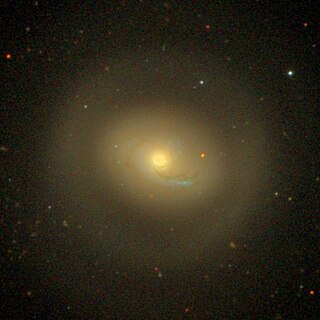
NGC 4457 is an intermediate spiral galaxy located about 55 million light-years away in the constellation of Virgo. It is also classified as a LINER galaxy, a class of active galaxy defined by their spectral line emissions. NGC 4457 Is inclined by about 33°. It was discovered by astronomer William Herschel on February 23, 1784. Despite being listed in the Virgo Cluster Catalog as VCC 1145, NGC 4457 is a member of the Virgo II Groups which form an extension of the Virgo cluster.

NGC 4612 is a barred lenticular galaxy located about 57 million light-years away in the constellation of Virgo. NGC 4612 was discovered by astronomer William Herschel on January 23, 1784. The galaxy is a member of the Virgo Cluster.

NGC 6753 is a massive unbarred spiral galaxy, seen almost exactly face-on, in the southern constellation of Pavo. It was discovered by the English astronomer John Herschel on July 5, 1836. The galaxy is located at a distance of 142 million light years from the Milky Way, and is receding with a heliocentric radial velocity of 3,140 km/s. It does not display any indications of a recent interaction with another galaxy or cluster.

NGC 4429 is a lenticular galaxy located about 55 million light-years away in the constellation of Virgo. NGC 4429 is tilted at an inclination of about 75° which means that the galaxy is tilted almost edge-on as seen from Earth. NGC 4429 was discovered by astronomer William Herschel on March 15, 1784. The galaxy is a member of the Virgo Cluster.

NGC 4689 is a spiral galaxy located about 54 million light-years away in the constellation of Coma Berenices. NGC 4689 is also classified as a LINER galaxy. NGC 4689 is inclined at an angle of about 36° which means that the galaxy is seen almost face-on to the Earth's line of sight. NGC 4689 was discovered by astronomer William Herschel on April 12, 1784. The galaxy is a member of the Virgo Cluster.
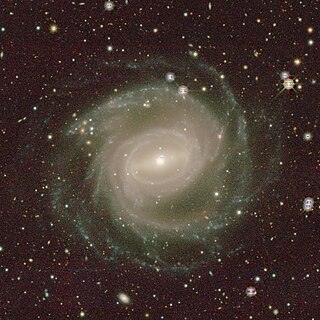
NGC 3313 is a large barred spiral galaxy located about 55 megaparsecs away in the constellation Hydra. It was discovered by astronomer Ormond Stone in 1886 and is an outlying member of the Hydra Cluster.

NGC 7531 is an intermediate spiral galaxy located in the constellation Grus. It is located at a distance of about 70 million light-years from Earth, which, given its apparent dimensions, means that NGC 7531 is about 95,000 light years across. It was discovered by John Herschel on September 2, 1836.

NGC 4513 is a lenticular galaxy and a ring galaxy located about 110 million light-years away in the constellation Draco. It was discovered by astronomer Heinrich d'Arrest on October 16, 1866.




















